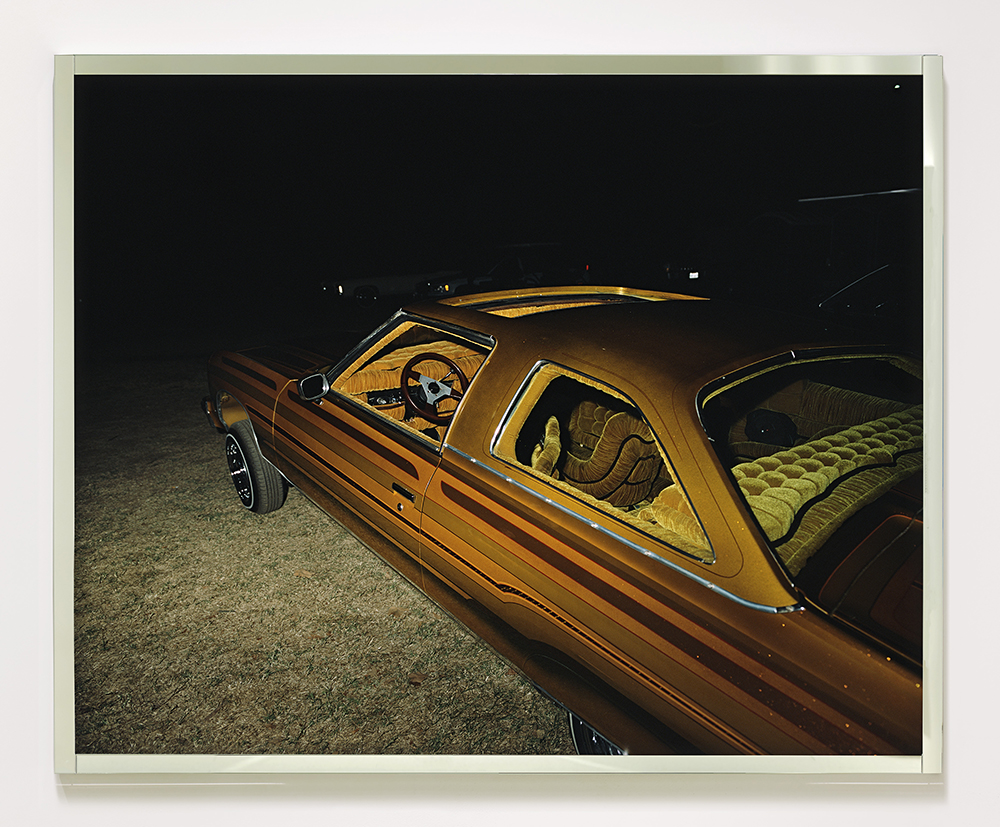Your cart is currently empty!
Deana Lawson David Kordansky Gallery

While Deana Lawson is known for her individual, staged photographs depicting African-Americans communities in interior and exterior environs, she also conceptualizes the entirety of her presentations, which often include casual snapshots displayed as collages. In this exhibition, titled “Mind’s Eye,” the photograph Cardeidra (all works 2023), which depicts a topless woman seated on a couch giving the finger to the photographer, sets the series in motion.
The central figure is joined by another woman who holds a sleeping child in her arms, but what stands out in the image is a mirror located in the back left corner of the room that captures the reflection of the photographer surrounded by a surprising flare of light. In her statement for the show, Lawson remarks that seeing the light reminded her of a dream of being in a plane that was suddenly surrounded by an ominous white light. Whether prophecy or coincidence, this dream almost became a reality two years later on a chartered flight to photograph Ivanpah—a solar farm in the Mojave Desert with 173,500 mirrors—as her plane was forced to make an emergency landing. Phantom reflections, fields of mirrors, appropriated snapshots and ancient statues—these connections pervade “Mind’s Eye.”

Lawson uses the gallery space as a stage. Not only does she frame each image with thin mirrors reminiscent of 1970s decor, an obvious reference to the Ivanpah site, but she also includes objects. For example, spread across the floor below the image Afriye is an array of small glass elephants. The photograph is intimate. The setting is a living room in which a young girl with an ornate hairdo, wearing a frilly white lace dress, stands on an ottoman holding her mother’s hand. Dressed in black, the mother sits calmly on a couch. Both stare at what one assumes is the photographer. The background includes a Tiffany-like lamp, as well as a framed image of a white flower. A styrofoam container of leftovers rests on the couch. Closed vertical blinds separate the room from the outside. In many ways, this is a typical Deana Lawson image: Every detail is thought out, carefully composed and staged. But the relationship between the large group of glass elephants and the image remains ambiguous.
A similarly obscured connection occurs in the corner of the gallery. On the floor between the photographs Olmec Negroid Stone Head and Arethea, Lawson placed a large white unpolished cluster of crystal, referencing the spiritual and creating a bridge between the images. She states, “Each of these works is born of an anticipation or meditation on some riddle that lies between this world and some other place.” While Lawson is particular about what is presented in each image and how they are displayed in the gallery space, she is also interested in what happens between and across these photographs, how the unknown and unanticipated can resonate through an image and across time, no matter how controlled the setup may be.